Best Things to Do in Paseo de Gracia in Barcelona
Passeig de Gràcia is home to some of Barcelona's main monuments and many of the best things to do in the city. In this post you'll discover all that Barcelona's most famous street has to offer.
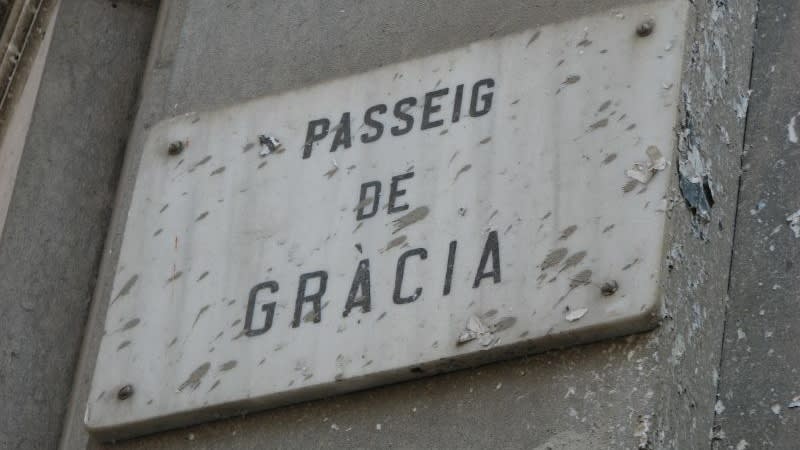
Paseo de Gracia, Barcelona | ©
New York has its Fifth Avenue, Paris has the Champs Elysées and Barcelona has the Paseo de Gracia. Barcelona 's most famous street starts at Plaça de Catalunya and ends at Avinguda Diagonal. In its 1.6 kilometres we find some of Barcelona's most essential attractions and it is the heart of modernism in the city.
But Passeig de Gràcia is much more than just beautiful buildings. It is the centre of commerce where you can find the main shops of the most prestigious brands, there are dozens of restaurants and bars that are among the best, and there is also space for culture and history. For all these reasons, Passeig de Gràcia can be considered the main artery of the city, with the permission of Las Ramblas, and here I will show you what to see on this avenue and what are the best plans it has to offer.
1. Visit the Batlló house
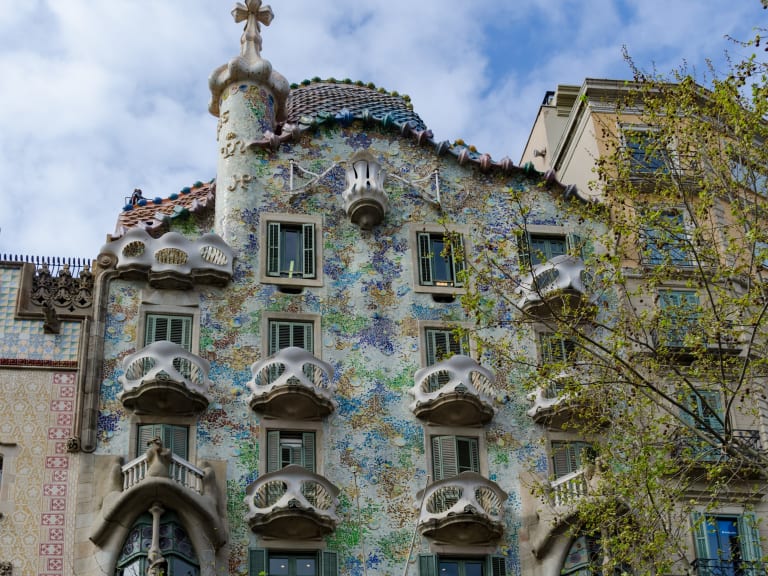
Antonio Gaudí is Barcelona's star architect and it can be said that Passeig de Gràcia was like a canvas for him. It is in this street where Gaudí has two of his best works, the Casa Batlló and La Pedrera.
If we come from Plaça de Catalunya, the first one we come across is Casa Batlló. Its name comes from the fact that it was the businessman Josep Batlló who commissioned Gaudí to build it. In fact, the building already existed and the architect only had to work his magic on it. It is one of the most striking examples of Gaudí's modernism thanks to its forms inspired by nature and the colours of its façades.
It is also one of the most visited monuments in Barcelona and one of the most highly rated. In fact, in 2021 it received an award as the best monument in the world. Visiting the Casa Batlló is almost a must if you are in Barcelona.
My advice is to book your tickets in advance, because if you wait to buy them at the ticket office you will most likely find long queues.
2. Get to know the Casa Milà, better known as La Pedrera
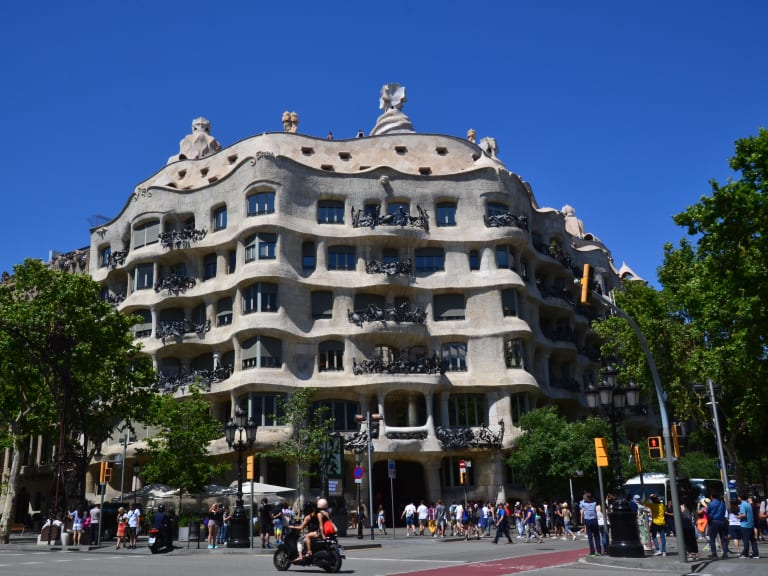
Sharing the limelight with Casa Batlló, we have La Pedrera on Passeig de Gràcia, also the work of Antonio Gaudí and an essential part of the architect's tours of the city.
Located at number 92, it was commissioned by the couple Pedro Milá and Roser Segimon, who trusted Gaudí to build them the best possible family home. The architect more than delivered, and since its completion in 1910, La Pedrera has been home to illustrious figures in Catalan society.
Today it is owned by the Catalunya-La Pedrera Foundation, which is in charge of organising tourist visits and the activities and exhibitions held inside.
On the outside, La Pedrera is somewhat more discreet than the Casa Batlló, but its forms are equally surprising, and inside it is an architectural prodigy. It is worth paying the entrance fee to go inside and see how all the rooms reflect the forms of nature and are full of symbolism.
The rooftop, known as the roof of the warriors, is particularly noteworthy for the shapes of its chimneys and for offering some of the best views of Barcelona. There is a special night-time activity here, consisting of a projection show on the warriors' chimneys. It is, without a doubt, one of the best places to see on Passeig de Gràcia.
3. Casa Amatller: Casa Batlló's unnoticed neighbour

Casa Batlló gets all the attention and makes its neighbours go unnoticed. And its neighbours are not exactly discreet. In fact, the building adjoining Casa Batlló is another exquisite example of modernism. Casa Amatller does not enjoy the fame of its neighbour, nor is it the work of Gaudí, but of the architect Josep Puig i Cadafalch, but it is also one of the best buildings on Passeig de Gràcia. You just have to stop and look at it. Its design is inspired by a Gothic palace but with the characteristic touch of Modernisme.
The façade is its main attraction, adorned almost entirely with ceramic elements. The doorway is decorated with a sculpture of Saint George fighting the dragon, the work of the sculptor Eusebi Arnau.
But the beauty is also inside, and Casa Amatller is open to visitors. There are guided tours or audio-guided tours lasting between 45 minutes and an hour that take you through the rooms of the house, the library and the photographic archive it houses. The good news is that you won't have to queue or endure the crowds as you do with its neighbour.
4. More Modernist houses: Casa Lleó i Morera
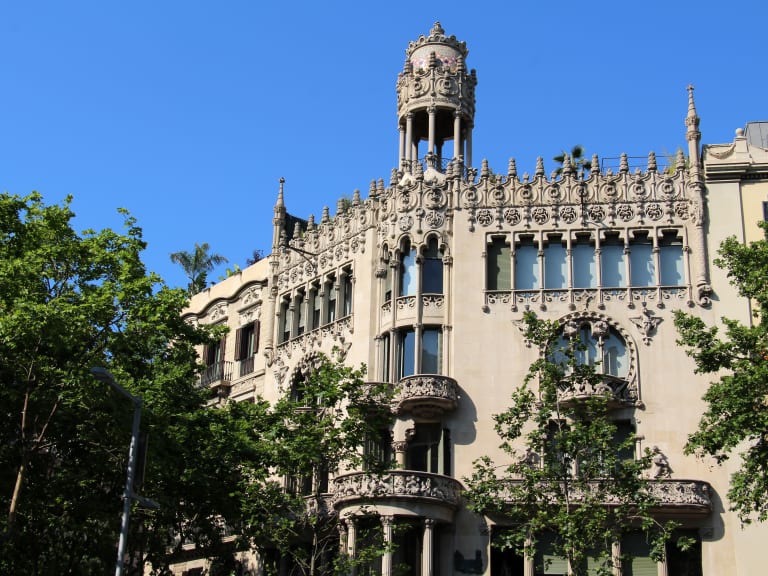
It seems that spectacular houses are the hallmark of Passeig de Gràcia. I could list many more on this list, but I'll close this review of these symbolic buildings on Passeig de Gràcia by talking about the Casa Lleó i Morera. This building is considered to be one of the finest modernista works.
This consideration is not only because of what can be seen with the naked eye, but also because it reflects the work of more than 40 outstanding Modernista artists.
The architect who led this construction was Lluís Domènech i Montaner, who managed to have his work considered as a small-scale palace of Catalan music, which, for those who don't know, is one of the most beautiful buildings in Barcelona.
On this occasion it is not possible to visit the interior, although you can enter the shops on the ground floor, but contemplating the shapes and sculptures on the façade is more than enough to be considered one of the most outstanding buildings on Passeig de Gràcia.
5. Discover the history of the apple of discord
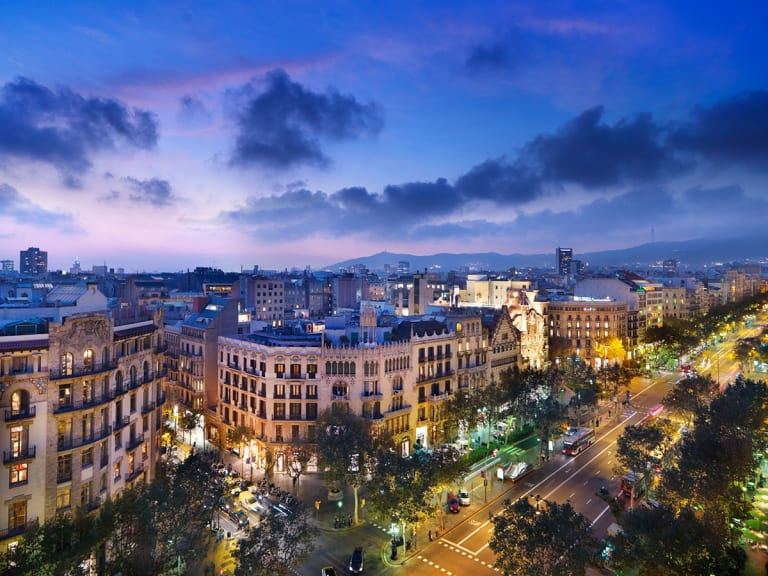
Passeig de Gràcia is surrounded by stories and curiosities. Knowing them can be one of the most interesting things to do in this mythical street, as we will get to see it with different eyes.
Of all these stories and tales, the best known and most interesting is that of the so-called " manzana de la discordia" (apple of discord). This is the name given to the block located between Aragón and Consejo de Ciento streets, which is made up of the buildings Casa Lleó Morera by Lluís Domènech i Montaner, Casa Mulleras by Enric Sagnier, Casa Bonet by Marceliano Coquillat, Casa Amatller by Josep Puig i Cadafalch and, the best known of them all, Casa Batlló by Antoni Gaudí.
The name of this group of buildings is inspired by the mythological story of the wedding of Peleus and Thetis, which ended with an argument between the goddesses Hera, Athena and Aphrodite to decide which of them was the most beautiful. And so it was with these houses.
At the beginning of the 20th century, when most of them were built, the architects who designed them fought among themselves to receive the urban planning prizes from Barcelona City Council to see which was the best work. It has never been unanimously decided which is the most beautiful building, so it might be fun for you to walk around this block of Passeig de Gràcia and decide for yourself which of them is the most beautiful house.
6. Shopping on Passeig de Gràcia
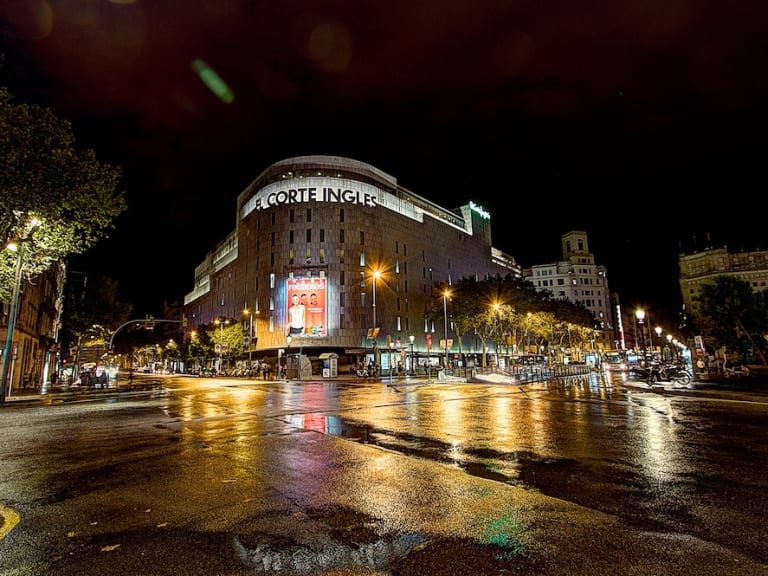
Another of the characteristics that have made Passeig de Gràcia famous are its shops and businesses. It is often compared to the Fifth Avenue in New York or the Champs Elysées in Paris precisely because it is home to the shops of the most prestigious brands in the world. Brands such as Gucci, Hermes, Bulgari, Louis Vuitton or Versace among many others.
There is also a place for local commerce. In fact, one of the most outstanding shops is Santa Eulalia. This original haute couture shop in Barcelona is also one of the oldest and most important and has come to compete with the leading brands.
Although Passeig de Gràcia is dominated by beauty and luxury, it is reserved for a privileged few. But there is also room for most mortals. In the area of the promenade closest to Plaça de Catalunya there are also several franchises and shops more suitable for all budgets. In any case, Passeig de Gràcia is the area to visit if shopping is part of your travels.
7. To eat in Passeig de Gràcia: El Nacional
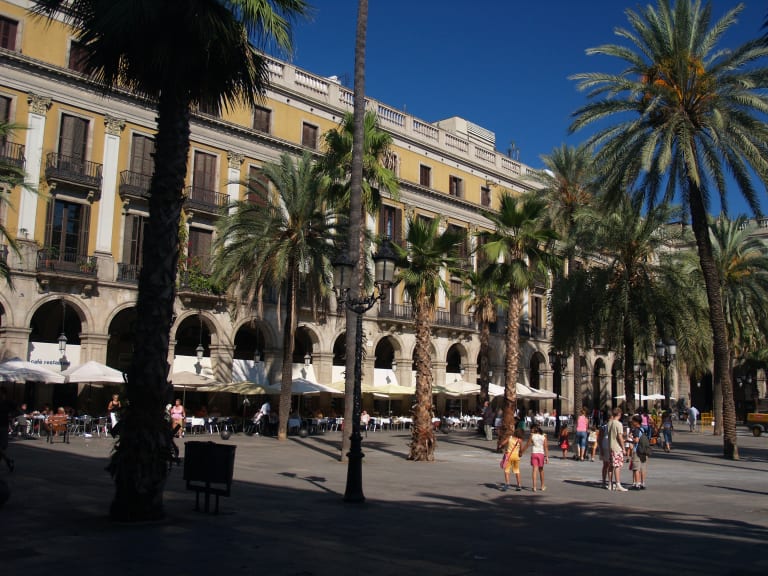
No day of sightseeing or shopping is better than enjoying a good meal. Although it's always a good idea to take a gastronomic tour of Barcelona, on Passeig de Gràcia you'll find some of the best restaurants in Barcelona.
If I had to choose just one place on the promenade to have lunch or dinner, it would be the Nacional. One of the oldest and most special restaurants in Barcelona. Between two buildings and after walking down a small alleyway you will discover this temple of gastronomy. It is not a normal restaurant. It is a space of more than 2,000 square metres with different areas to enjoy various types of food and drinks.
Inside the Nacional there is a meat restaurant, a fish restaurant, a tapas and rice restaurant and a gourmet fast food restaurant. There are also different bars for beer, wine, cava, cocktails and other drinks.
Of course there are more places to eat on Passeig de Gràcia. From Michelin stars to bars and restaurants to suit all budgets. There is something for everyone.
8. The Palau Robert
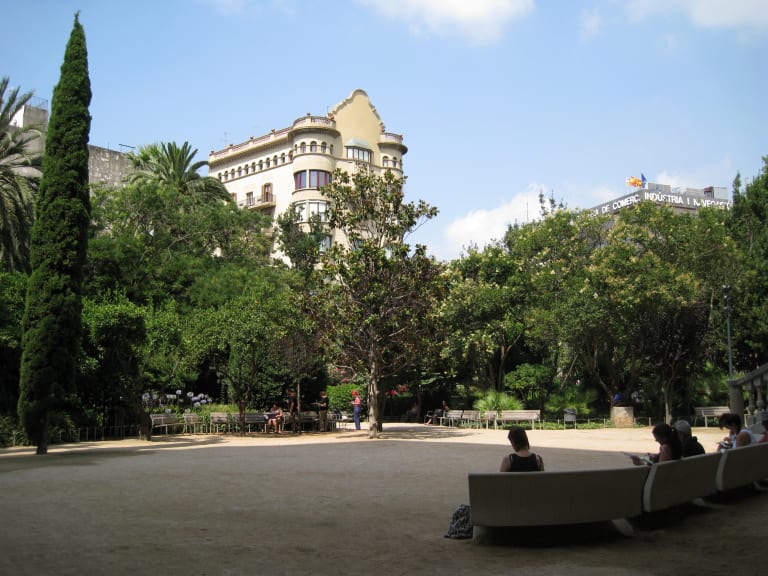
Culture also has its place on Passeig de Gràcia. Specifically, at the end of the avenue, right at the junction with Avinguda Diagonal. This is where you will find the Palau Robert.
This former palace dating from 1903, which was the home of the Marquis of Robert, is now one of the most important cultural centres in Barcelona, owned by the Generalitat de Catalunya. It has three exhibition halls where there are continually exhibitions of painting, photography, historical exhibitions and all kinds of cultural content.
It also has a concert venue, a city tourist office, a bookshop and gardens that are open to the public. There is always something to see at the Robert Palace, so if you enjoy culture, here is a link to its website where you can find all the activities and exhibitions held in this corner of Passeig de Gràcia.
9. A stroll to enjoy the decoration of Passeig de Gràcia
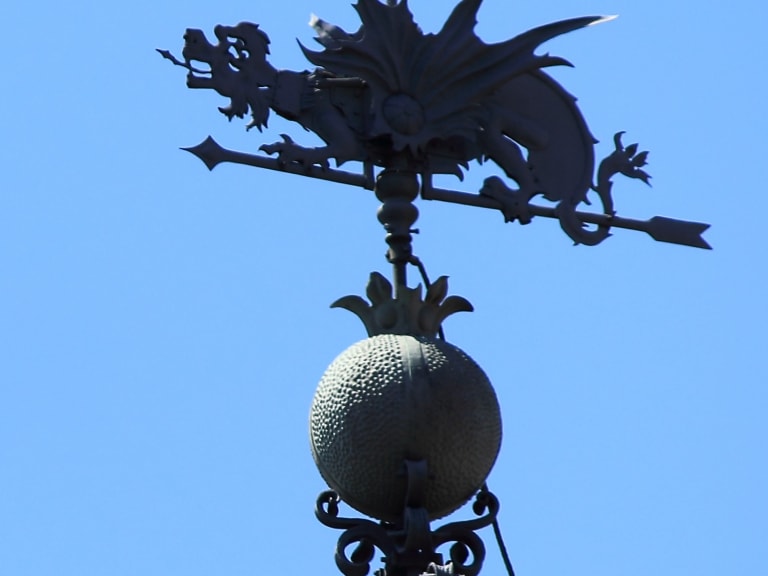
Sometimes what is most enjoyable is simplicity. Like the simplicity of simply taking a stroll. And Passeig de Gràcia is highly recommended in this sense. And why? Well, the best way to find out is to put it into practice, but I'll try to show you in words why. I can simply say that it is one of the most, if not the most, beautiful streets in Barcelona. Its charm lies not only in its buildings.
Another attraction that catches the eye of passers-by is the decoration of Passeig de Gràcia. Such is the attention to detail that the modernist architects put into this street that even its lampposts are works of art.
In fact, they are one of the symbols of the place. There are a total of 32 lampposts and benchesdesigned by the architect Pere Falqués i Urpí, whose shapes and treatment make them practically sculptures.
Modernisme is even reflected in the floor, whose paving is printed with forms from nature and other decorative elements that are the work of Antonio Gaudí. For all these reasons, and because it is much better in person, you should honour the title of this walk and stroll along this street enjoying its beauty.
10. Visit the museums on Passeig de Gràcia
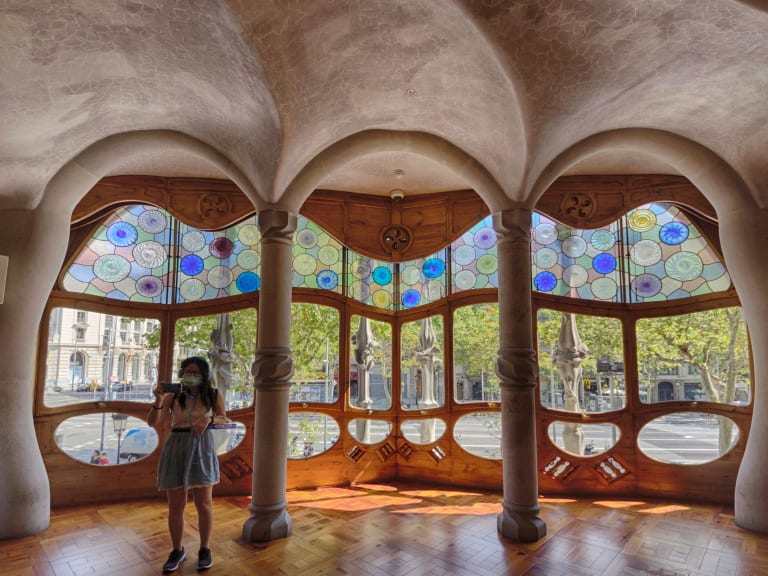
On Passeig de Gràcia there are also some very interesting museums and art galleries hidden among modernist buildings. Leaving aside the museums and exhibitions of the Casa Batlló and La Pedrera, there are some as interesting as the Egyptian Museum of Barcelona. This has more than 1,200 pieces of Egyptian culture, making it one of the most important Egyptian collections in Europe.
Another museum is the museum of perfumes. It is undoubtedly one of the most curious museums you will discover and takes a look at history and art through the containers that contained perfumes from Roman times to modernism and the present day.
Although these two are not usually on lists of the best museums in Barcelona as they are a bit more niche, they are still worth a visit. In addition, Passeig de Gràcia has dozens of art galleries located mainly on the far left near the intersection with Avinguda Diagonal.
